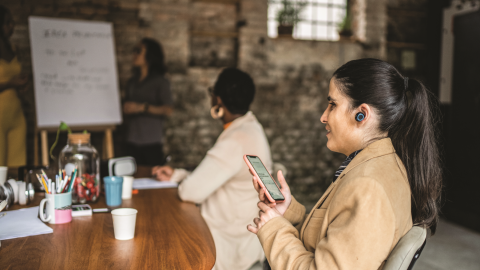Summit on Cyber-Infrastructure for Deaf and Hard of Hearing Students
Last week, I participated in a summit on the technology needs of university students who are deaf and hard-of-hearing (“deaf/HH”). The summit was hosted by the Rochester Institute of Technology National Technology Institute of the Deaf.
The primary purpose of the summit was to collect input from various stakeholders about communication and learning issues in universities today, especially for deaf/HH students in Science, Engineering and Technology. Another goal of the summit was to brainstorm ways technology (and support processes) can help these students become even more successful in academia and in a transition to the workforce.
If you are designing features that will be used by deaf/HH people, or planning research, here are some user experience factors to consider:
– The Deaf/HH community is diverse and likewise, their technology needs and preferences are diverse. When creating new innovations or research, it is imperative to get the perspective and input from the community along the way.
– ASL is a language (just like a spoken language, like Spanish), not a representation of spoken English. ASL is an evolving language. There are new terms being created by the community. For example, there are several ways to sign “computer’.
– In the various academic environments (lab, ad-hoc, etc), students have to process a lot of information coming at them visually. They have to quickly decide whether to focus on the interpreter, professor, text, visual materials, or other students.
– Along with access to spoken language, dead/HH students also may learn concepts in different ways than hearing students. Relevant academic research points to the need to better understand the learning cognitive processes and areas of the brain used to process ASL and text.
– Providing access to spoken language can be accomplished in different ways (captions vs ASL), but these ways are not equal in all circumstances. Reading the text captions is not the same visceral experience as communicating in ASL.
Overall, the summit was very insightful for me. It was a chance to learn from various perspectives, and a respectful dialog about different opinions. I was inspired by the dedication of the students, researchers, Dr. Hurwitz (the VP and Dean of NTID, and Dr. Diaz-Herrera (the Dean of the RIT’s College of Computing and Information Sciences), and other summit leaders. I look forward to the formal report that will compile the input and recommendations from the summit.







